China has long been the world’s leading supplier of furniture, offering competitive prices, a vast selection of styles, and reliable supply chains. Whether you’re a wholesaler, store owner, or e-commerce seller, importing furniture from China can be a profitable venture—if you know how to navigate the process. In this guide, we’ll walk you through everything you need to know to import furniture successfully in 2025.
Why Import Furniture from China?
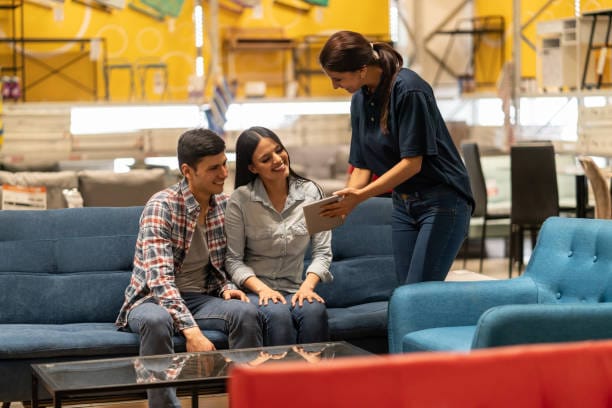
In the modern global market, the furniture industry is experiencing remarkable transformations. As a major hub for furniture manufacturing, China stands out with its distinct advantages, drawing the attention of buyers worldwide. But what makes importing furniture from China a smart decision?
Supply Chain Advantages: Efficient, Stable, and Reliable
Consider a solid wood bed made in China as an example. From sourcing raw materials to manufacturing, packaging, and shipping, the entire process can be completed within just a few weeks. This efficiency stems from China’s streamlined production timelines.
Additionally, the country’s logistics infrastructure continues to advance, offering fast and reliable delivery by sea, air, or land, ensuring your furniture arrives promptly. Furthermore, Chinese furniture manufacturers have extensive export experience and provide international-standard packaging and shipping services to protect your furniture from damage during transit.
Competitive Prices with High Quality
China’s relatively low production costs make its furniture highly price-competitive. In addition, the benefits of production efficiency and economies of scale help further reduce costs, offering buyers more affordable options. While production costs are kept low, the quality remains high. Buyers can save a considerable amount while still getting the furniture they want. Why not take advantage of this opportunity?
Wide Variety of Styles and Designs
Chinese manufacturers cater to diverse markets, offering everything from traditional wooden furniture to sleek, modern designs. Whether you’re looking for office furniture, home decor pieces, or outdoor sets, you can find an extensive range of options to suit your brand’s aesthetic.
Imitation and High-End Customization
A key strength of the Chinese furniture market is its ability to replicate designs and offer high-end customization. As a leading furniture manufacturing hub, China boasts numerous production centers and a wide range of products. Notably, compared to many European countries, Chinese furniture is much more affordable.
For instance, a popular European-style sofa that might cost thousands of euros in Europe could be priced at only a few hundred to a few thousand yuan in China, offering significant cost savings for buyers. Whether it’s recreating classic designs or customizing premium furniture based on specific images, Chinese manufacturers can fulfill buyers’ unique needs with exceptional craftsmanship and efficient production.
Types of Furniture Available for Import from China
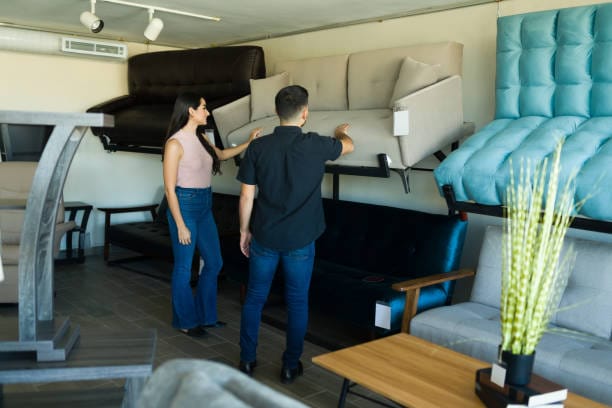
Furniture made in China comes in a wide range of styles, including solid wood, metal, glass, and plastic options. Whether you’re looking for classic European-style carved beds, sleek modern minimalist desks, functional storage cabinets, or stylish sideboards, Chinese-manufactured furniture can accommodate diverse home decor and practical requirements.
Below are some of the most popular types of furniture available for import:
- Hotel and office furniture
- Wooden, metal, PVC, and plywood furniture
- Garden furniture, including wicker and rattan
- Kitchen and bathroom furniture
- Sofas, suites, and beds
- Dining room furniture
Different Furniture Manufacturing Regions in China
The Pearl River Delta: The “Manufacturing Capital” of Chinese Furniture
As one of the world’s largest furniture manufacturing hubs, China has its furniture industry spread across various regions, with some areas standing out. The Pearl River Delta, in particular, is a key center for Chinese furniture production, home to numerous high-quality manufacturers and advanced production technologies.
This region includes provinces like Guangdong and Fujian, as well as cities such as Shenzhen and Guangzhou. Since 1993, when Deng Xiaoping made his well-known declaration to “promote prosperity” and established the first free trade zone, the Pearl River Delta has become a popular location for manufacturers, especially given its proximity to Hong Kong.
As a result, this region boasts a well-established and mature history of manufacturing and exporting furniture for global brands.
This region provides an extensive range of furniture styles, ensuring that whatever you need, you’ll find it here. Additionally, certain cities specialize in specific types of furniture. For instance, Dongguan is renowned for its sofa production, while Foshan serves as the central hub for dining room furniture, assembled pieces, and a variety of general furniture. Foshan also features a prominent furniture street where numerous factories and brands showcase their products.
The Yangtze River Delta (Eastern Coastal Region of China)
The Yangtze River Delta encompasses regions like Shanghai, Zhejiang, and Jiangsu, offering a wide variety of furniture styles. This area is home to both well-established brands and newer manufacturers, though the quality of the latter can vary. In recent years, furniture prices in this region have increased, making it less ideal for finding the cheapest options. However, the area excels in the production of rattan, solid wood, and metal furniture.
The Central Triangle (Central China)
Central China comprises coastal regions like Fujian and inland provinces such as Anhui, Shandong, and Henan. For furniture importers, the prices in this area are relatively affordable. In the coastal province of Fujian, you can find beautifully crafted flat-pack furniture with excellent paint finishes. Moving further inland, you’ll encounter a wide selection of outdoor wicker garden furniture, fabric beds, and metal beds.
The Bohai Rim (Northern Coastal Region)
The Bohai Rim, located in northern China and including Beijing, is a highly industrialized area known as the birthplace of China’s glass manufacturing industry. Furniture prices here tend to be quite affordable, especially for glass and metal pieces, such as dining tables. The region also has a well-established supply chain for dining chairs and indoor decor.
However, from an “export market” standpoint, the northern furniture industry may not be as advanced. Therefore, if you’re in search of upholstered products, fabric chairs, or sofas, you may not need to specifically seek out manufacturers that meet flame retardant standards.
Things You Need to Know Before Importing Furniture from China
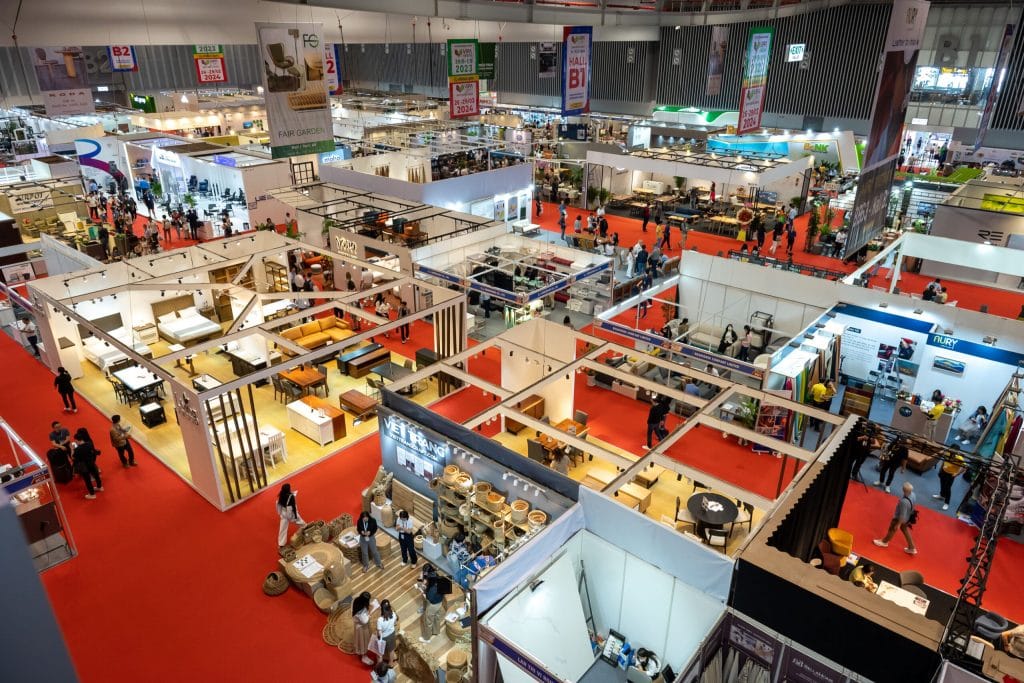
Procurement Channels
Procurement Agents: Hiring professional procurement agents can save you considerable time and effort. These agents typically possess in-depth industry expertise and extensive networks, helping you find reliable suppliers while offering professional negotiation and quality control services. However, utilizing procurement agents involves paying agency fees.
Online Platforms like Alibaba: Online platforms offer a convenient way to purchase, but the quality of products and reputation of suppliers can vary. It’s important to carefully vet suppliers, checking their transaction history, customer reviews, and product quality certifications before making a selection.
On-site Procurement: Traveling to China for on-site procurement enables you to personally inspect product quality and engage in face-to-face discussions with suppliers, fostering stronger business relationships. However, this approach is expensive and time-consuming.
Furniture Exhibitions: Attending furniture exhibitions gives you the chance to connect directly with multiple suppliers and explore the latest products, offering valuable insights into market trends and networking opportunities. However, exhibition participation is costly and requires careful planning in advance.
Choosing the right procurement method is essential, whether you opt for procurement agents, online platforms like Alibaba, or personal on-site procurement. Each method comes with its own set of advantages and disadvantages.
Product Compliance
It is crucial to ensure that any furniture imported from China meets the regulations and standards of your country or region. Let’s look at the U.S. and EU markets as examples:
In the U.S., imported furniture must comply with various safety and environmental regulations. Under the Consumer Product Safety Improvement Act (CPSIA), imported products must pass tests, including those by ASTM, and display tracking labels from the U.S. Consumer Product Safety Commission. Some products, especially children’s furniture, must also include registration cards and a Children’s Product Certificate (CPC).
If the furniture contains wood, especially in children’s products, it must adhere to the Animal and Plant Health Inspection Service (APHIS) requirements, which include mandatory heat treatment and fumigation. While the U.S. does not have a unified furniture fire safety standard, California’s Technical Bulletin 17TB117 is commonly followed. Additionally, don’t forget to arrange the customs bond.
In the EU, imported furniture must meet strict requirements, including obtaining the CE mark, which certifies product safety, and complying with REACH regulations on the registration, evaluation, authorization, and restriction of chemicals. Importers must provide necessary declarations and test reports to prove compliance.
For the UK market, while small businesses importing furniture don’t need special permits, larger companies must register for an EORI number for digital management. Under the UK’s furniture and furnishings regulations, products must adhere to fire safety standards, and compliance documents must be provided with permanent labels on packaging.
Although not required by law, offering information on product sustainability can appeal to modern consumers. To demonstrate sustainable sourcing of wood, obtaining FSC certification may be beneficial.
Choose the Right Logistics Method
Transportation costs are a significant factor for consumers when importing furniture. Understanding the different fee structures for sea, air, and land transportation, and selecting the most appropriate method, is key to managing the overall budget.
(1) Choosing the Mode of Transportation
Sea Freight: This is the most common and cost-effective method for importing furniture. It allows for large quantities to be shipped in containers, making it ideal for bulk purchases and lowering per-unit transportation costs. However, it comes with the downside of long transit times, which can range from weeks to months depending on the route, port, and vessel type. Delays due to customs or other procedures may also occur.
Air Freight: Air freight is faster than sea freight, with goods often arriving within days, making it ideal for small quantities or urgent shipments. However, it is more expensive, particularly for large furniture items, where costs can escalate significantly.
Land Transport: This method is suitable for transporting furniture between neighboring countries, offering a balance between the costs and timeframes of sea and air freight.
(2) Choosing Full Container Load (FCL) or Less than Container Load (LCL)
Full Container Load (FCL): FCL is ideal when shipping a large volume of goods. It offers significant cost savings, minimizes potential damage during loading and unloading, and ensures high efficiency by delivering directly to the destination. The costs involved include sea freight, terminal handling charges (THC), documentation fees, international ship and port facility security charges (ISPS), and seal fees. For instance, the cost from Guangzhou to Bangkok for a 20GP container is about 2147.25 RMB (exchange rate 7.15), and for a 40HQ container, around 3187.25 RMB.
Less than Container Load (LCL): LCL is suited for smaller shipments, where you don’t need a full container. However, the per-cubic-meter cost is higher than FCL, and additional freight and duties apply. LCL shipments also require multiple handling and can face delays as the goods wait for other items to fill the container.
(3) Arranging Transportation Yourself vs. Using a Freight Forwarder
Self-Arranged Transportation: If you are experienced in logistics and have the necessary resources to manage the process, self-arranged transportation might be a good option, particularly for large, well-established companies. However, it involves complex tasks like customs handling, booking, and tracking, which can be overwhelming for those unfamiliar with logistics.
Freight Forwarder: For most companies, using a freight forwarder is a more practical and cost-effective choice. A reliable freight forwarder ensures a smoother transportation process, providing services such as packaging, transport, customs clearance, and delivery. When selecting a freight forwarder, consider:
Experience and expertise: The forwarder should have extensive international shipping knowledge and professional skills.
Service range: The forwarder should offer a comprehensive suite of services to cover all logistics needs.
Transportation network: The forwarder should have a broad network across various regions to facilitate smooth delivery.
Reputation and reviews: Research customer feedback and industry certifications to assess the reliability of the freight forwarder.
In conclusion, choosing the right logistics method is essential for ensuring the safe and timely delivery of furniture. Each method has its pros and cons, so selecting the one that best fits the needs of your goods and situation is crucial for an efficient and cost-effective transportation process.
Compliance with Import Regulations
Before importing furniture, it’s essential to understand and adhere to the import regulations of the target country. Customs duties and taxes are critical factors that can significantly impact the total cost, import process, and timeline.
(1) Customs Policies
Imported furniture must comply with the specific regulations of the destination country. Since each country may have different tariff rates and collection methods for imported goods, it’s important for consumers to be familiar with and follow the relevant regulations.
(2) Understanding Tariff Policies
Before importing furniture, consumers should gain a clear understanding of the tariff policies both in China and the destination country to accurately calculate taxes and optimize overall costs.
(3) Choosing the Right Import Method
Depending on the type, quantity, and value of the furniture, selecting the appropriate import method, such as Full Container Load (FCL) or Less than Container Load (LCL), can help reduce tariffs and transportation expenses.
(4) Utilizing Tax Incentives
Consumers should familiarize themselves with the tax incentives available in the destination country, such as free trade agreements or tariff reductions, to minimize import costs.
(5) Seeking Professional Help
Consulting professional import service providers or legal advisors is recommended to ensure compliance with regulations and to reduce tax-related expenses.
Handling customs duties and taxes also involves other considerations, such as product labeling, packaging requirements, and import licenses. These regulations can vary by country, so it’s crucial to prepare the necessary documents and procedures in advance.
(6) Environmental and Safety Standards
With rising global environmental concerns, many countries impose strict environmental standards on imported furniture. Consumers must ensure that the furniture they buy complies with the environmental standards of the destination country, such as regulations on formaldehyde and VOC emissions. Opting for furniture with “green product” certifications can help meet these requirements.
Complying with Safety Standards: In addition to environmental standards, imported furniture must meet safety requirements, such as structural integrity and flame retardancy. This is especially important for children’s furniture, where safety performance should be prioritized to protect children during use.
Seeking Third-Party Testing and Certification: To guarantee that the furniture meets the destination country’s environmental and safety standards, consumers can engage third-party testing and certification agencies. These agencies provide comprehensive evaluations and issue certification reports, which can serve as proof of compliance and help smooth the import process.
Import Tariffs
Different countries and regions may implement tariff preference and refund policies to encourage trade and attract foreign investment. The U.S. and the UK, for example, each have their own specific policies and standards.
(1) U.S. Import Furniture Tariffs
Tariff Rates: The U.S. imposes varying import tariffs depending on the type, material, and value of the furniture. Solid wood and high-end furniture may face higher tariffs, while metal or plastic furniture typically has lower rates.
Specific Rates: Tariff rates are determined based on the product’s Harmonized System (HS) code and Harmonized Tariff Schedule (HTS) code. For furniture, tariffs can range from 0% to nearly 20%, but they may exceed this depending on the product’s classification.
Tariff Preferences and Refund Policies: The U.S. has several free trade agreements with other countries that may offer reduced tariffs for furniture imports. For example, under the North American Free Trade Agreement (NAFTA), member countries can benefit from lower tariffs when importing furniture.
Consulting Advice: Before purchasing furniture, it’s recommended to consult with a professional tariff advisor or U.S. customs to obtain the correct tariff rates and calculation methods. This will help ensure accurate cost planning and avoid unexpected tariff issues.
(2) UK Import Furniture Tariffs
Tariff Rates: As with the U.S., the UK’s import tariffs depend on the type, material, and value of the furniture. Solid wood and high-end furniture typically attract higher tariffs, while metal or plastic furniture may face lower tariffs.
Standard VAT Rate: The UK’s standard VAT rate is 20%, which applies to most home goods and services. However, certain products, like energy-saving devices, may qualify for a reduced rate (e.g., 5%) or even a zero rate.
Tariff Preferences and Refund Policies: The UK has established various free trade agreements, which may include tariff reductions for furniture. Additionally, the UK government may offer refund policies or subsidies to promote furniture imports and the domestic manufacturing sector.
Consulting Advice: It is advisable to consult with a professional tariff advisor or UK customs to get accurate tariff rates and calculations. This will help in precise cost planning and prevent tariff-related issues.
These policies often include tariff reductions, exemptions, or refunds. Understanding them can help lower the cost of imports. For more detailed information, you can consult local customs or relevant authorities.
Minimum Order Quantity (MOQ)
Many Chinese furniture manufacturers have minimum order quantity (MOQ) requirements, which can be a hurdle for small batch buyers. In such cases, it may be worth considering purchasing through dealers or showrooms. Companies like HomeBridge, with strong partnerships with factories and extensive transaction experience, can provide customers with more competitive prices and flexible purchasing options.
Step-by-Step Guide to Importing Furniture from China

1. Confirm the Product
Select the type, material, and design specifications of the furniture you wish to import.
2. Cost Calculation and Price Negotiation
The purchase cost of furniture is the most immediate expense in the import process, influenced by factors such as material, design, size, and brand. Typically, high-end furniture is more expensive but offers better quality and longevity.
When purchasing furniture individually from Chinese furniture malls, consumers often have access to only limited discounts or promotions. However, by buying in bulk from Chinese factories or through professional furniture service providers like Asian Sourcing Group, even small orders can benefit from cost savings.
Our direct partnerships with factories through contracts enable consumers to access high-quality furniture at more competitive prices. Additionally, we offer comprehensive services, including product consultation, logistics, and after-sales support, which helps further reduce overall costs for consumers.
3. Determining Minimum Order Quantity (MOQ)
Given the long-distance nature of importing furniture and the focus of Chinese factories on mass production, there will typically be minimum order quantity (MOQ) requirements. While these standards can vary among suppliers, certain expectations are common. ASG will work with you to communicate directly with suppliers, clarify, and negotiate the MOQ to help you achieve a balance between your budget and inventory requirements.
4. Payment Method
Before finalizing an agreement, clarify the payment method with the supplier. Common payment options for furniture purchases from China include:
- Full Payment Upfront: Paying in full before production is risky and usually only used for small orders (under $5000).
- 30% Deposit, 70% Before Shipping: This is still risky and financially burdensome, especially for larger orders over $10,000.
- 30% Deposit, 70% After Bill of Lading: This is more common and ensures the goods are shipped and meet specifications.
- Full Payment After Arrival (within 90 days): The best option, requiring a solid transaction history, good credit, and a signed contract.
Professional procurement agents like ASG can help secure favorable credit terms and manage payments to ensure smooth transactions.
5. Quality Control
Quality control is essential when importing furniture from China.
Chinese furniture manufacturers may face quality issues during production, which can vary by factory. For importers, these issues can be costly, as goods cannot be returned once shipped. Therefore, confirming the furniture’s quality before shipment is vital. Reviewing samples and obtaining detailed descriptions or photos is key, and professional service providers like ASG help ensure the product meets specifications by signing contracts with manufacturers.
ASG ensures furniture fits your space, meets material and craftsmanship standards, and adheres to environmental requirements. We work closely with manufacturers to control quality at every stage, from material selection to final inspection.
Quality inspection reports should detail the product’s condition, and ASG’s team ensures each step meets your standards. To avoid poor quality control, many importers work with trusted agents like ASG, who provide full-time inspectors for accountability.
With regular inspections and close communication with suppliers, ASG ensures you receive high-quality furniture and a smooth import process.
6. Shipping
(1) Shipping Time
Shipping time depends on the method, distance, and customs. Consult with the freight forwarder to determine the best option based on your needs.
(2) Shipping Insurance
Shipping insurance protects against damage or loss during transport. Choose coverage based on the value and risks associated with your furniture.
(3) Container Selection
Container size should match your cargo’s volume and weight. Options include 20GP, 40GP, and 40HQ containers. If your goods don’t fill a full container, consider Less than Container Load (LCL) shipping, which is more affordable but riskier.
(4) Loading Inspection
A loading inspection ensures proper packaging and stacking, reducing damage risks during transport.
(5) Delivery Time
Delivery time typically ranges from 14 to 50 days. Plan accordingly to avoid delays.
You can let the supplier handle shipping or work with a freight forwarder. ASG can assist with selecting the best logistics option, ensuring smooth import and delivery.
Conclusion
Importing furniture from China can be a smooth process or a challenging one, depending on your knowledge and the support you choose. If you’re well-prepared and work with trusted partners, it can be a rewarding experience; otherwise, you may face several hurdles.
ASG offers professional furniture sourcing and customization services, helping customers avoid common mistakes while ensuring high-quality products and a hassle-free shopping experience. From supplier selection and quality control to logistics guidance, ASG is dedicated to making your furniture purchasing journey easier and more enjoyable, helping you create your “dream home” like Maya.


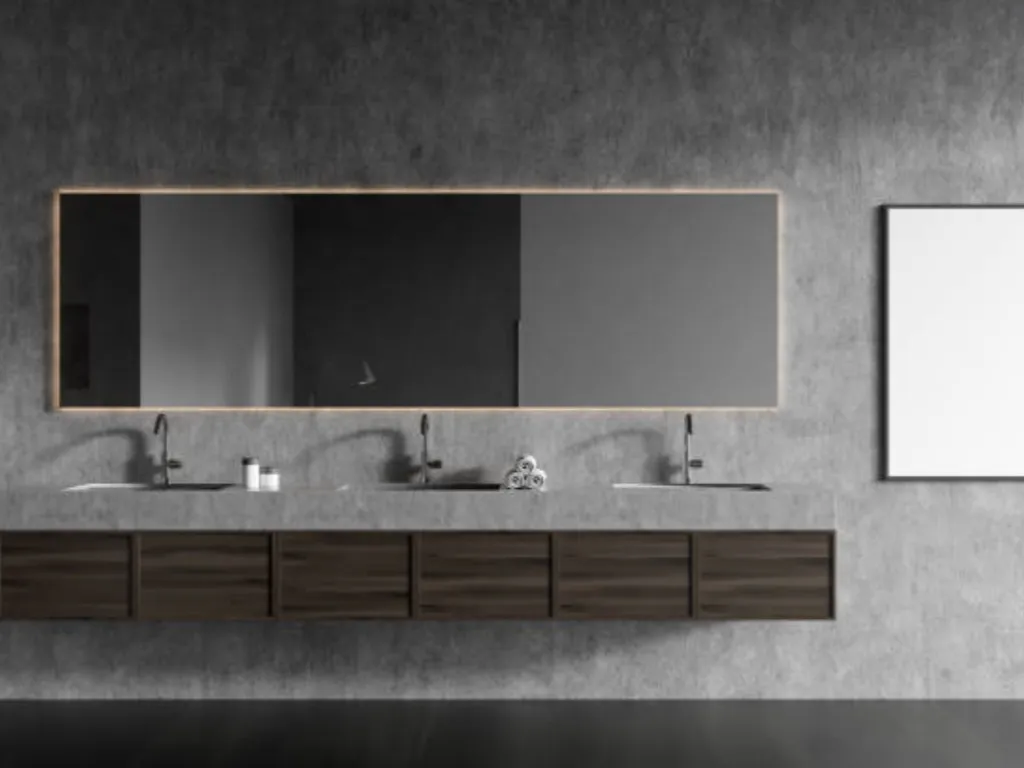

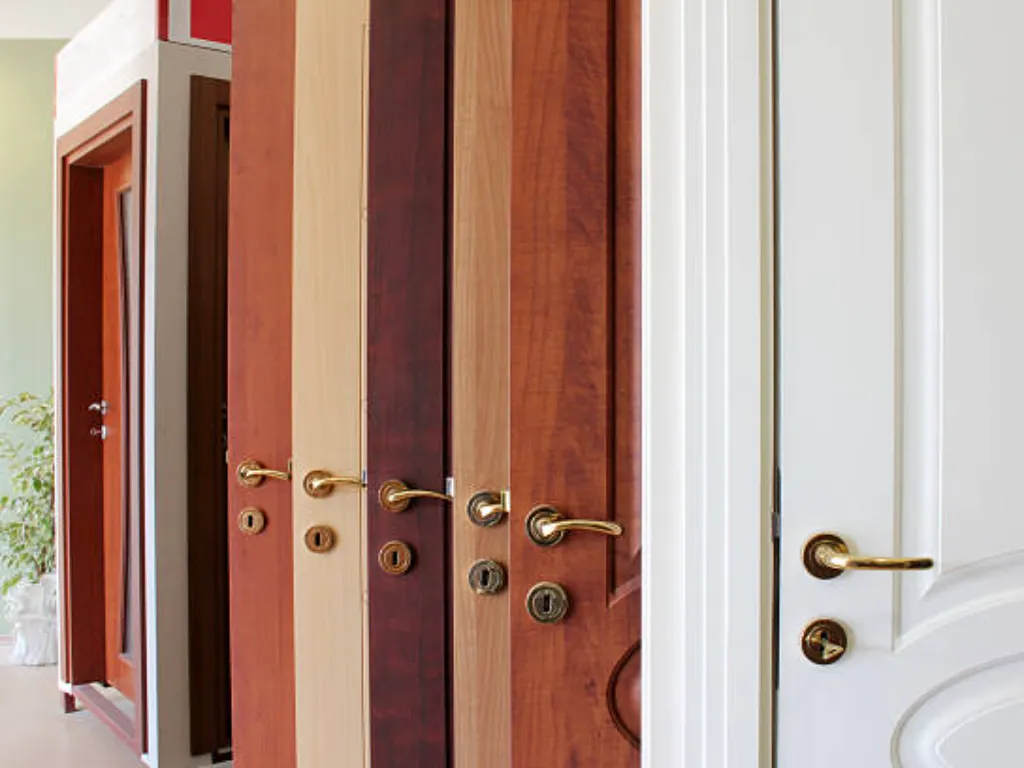
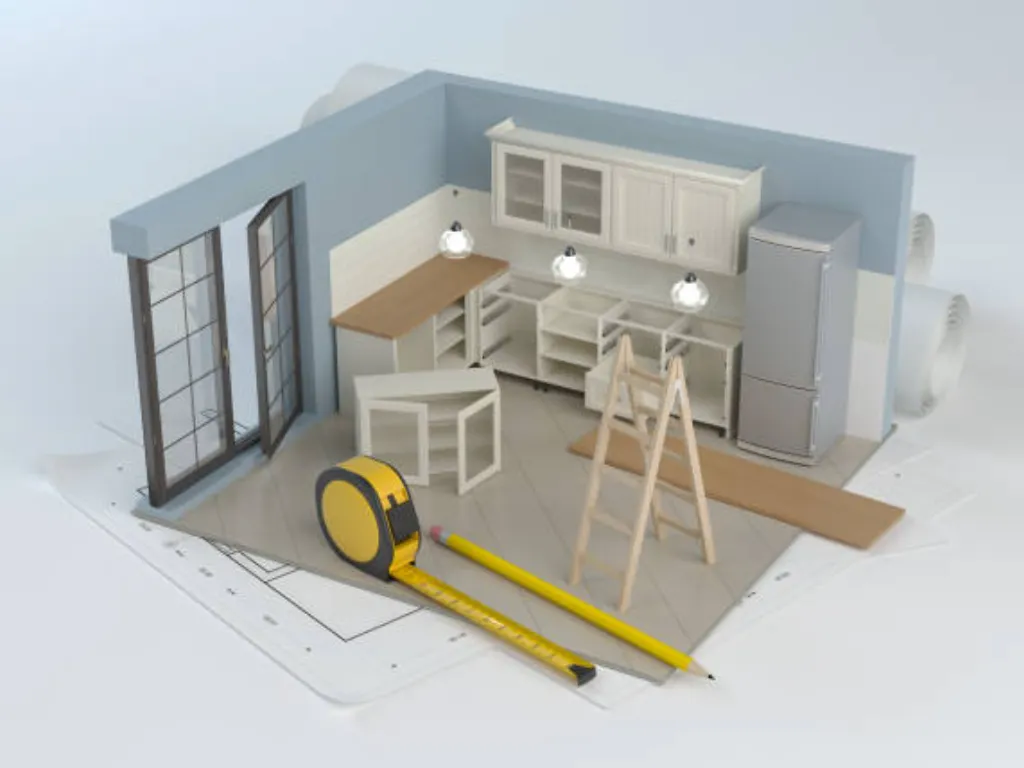
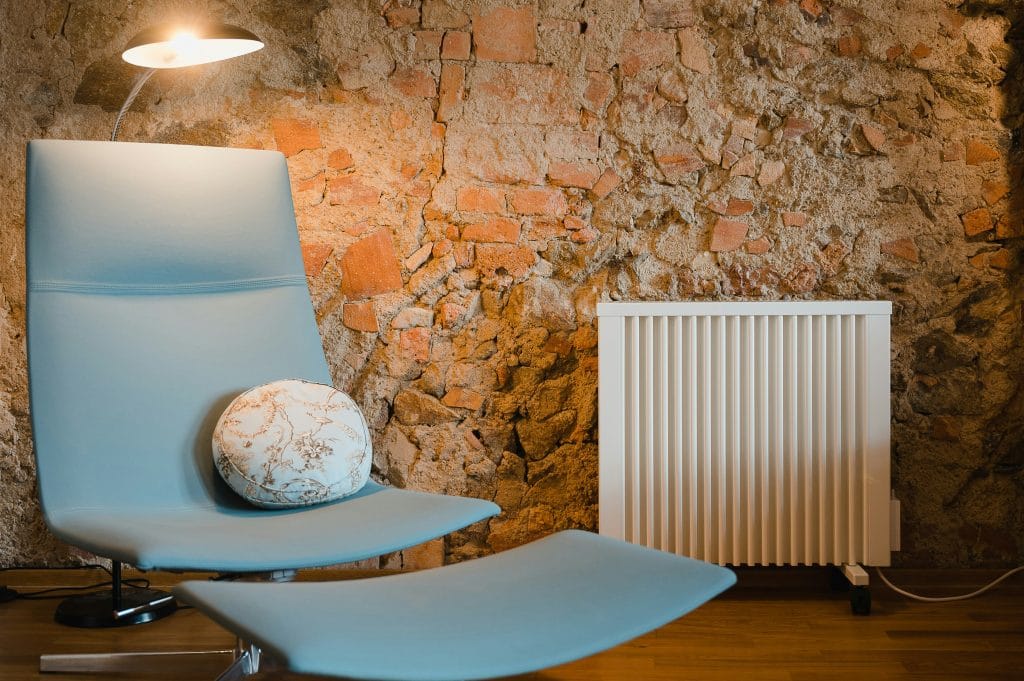
-300x198.png)